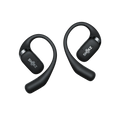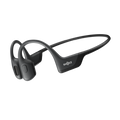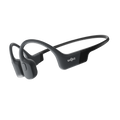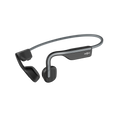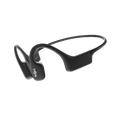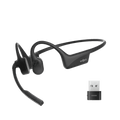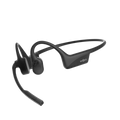It’s a crazy thought, here I am writing a blog about triathlon race nutrition but there are no events to race in the foreseeable future. With the current health and economic crisis, the world has a lot on its plate right now…athletes missing their favorite races definitely isn’t high on the list of priorities! However, triathlon is an important part of how many people bring physical, mental and social health into their lives. While we don’t have races right now and training is limited, things will get back to normal at some point. As sure as triathletes (and cyclists) like to wear spandex to coffee shops…surely we will toe the start line again! So why not take advantage of this time to focus on details of training and racing that often get overlooked? One of the most neglected details athletes overlook is nutrition. Nutrition can really be the piece of the puzzle that makes or breaks your race. I hate to see athletes spend so much time training and so much money traveling to races only to have their day ruined by nutritional issues. I’ve experienced this myself and trust me when I say take time now to figure out your nutrition, it will pay big when we get back to racing!
Race day nutrition doesn’t start on race day, it starts in training. The golden rule of racing is don’t try anything new on race day! This is particularly true for your nutrition plan. While how you fuel for training is very dependent on the type of session you are doing, there are absolutely days in your training when you’ll need to practice your race nutrition. When it comes to how I fuel in training I loosely categorize my session into three categories:
- Aerobic Training
- Interval Training
- Race Simulations
Aerobic Training
For aerobic sessions, I focus on improving my metabolic efficiency with a lower caloric consumption. When training aerobically we can rely more on our body’s ability to oxidize fat for the energy our body needs in training. You use less energy per hour and a higher percent of that energy comes from fat. When combining this with the fact that the liver stores approximately 125g of glycogen and (depending on the person) the muscles store another 250g of glycogen, you see that the body is quite well equipped to handle aerobic training without copious amounts of gels and bars.
Interval Training
When I’m doing sessions under 2 hours I tend to train with just water and low-calorie electrolyte drinks. For longer 2-4 hr sessions I rely on UCAN (low-glycemic carbohydrate) to provide a steady energy source. If I’m riding for over 4 hours then there is probably a coffee shop or gas station stop for a treat and a cold drink. It’s important to note that this is also very dependent on one’s physical condition and metabolic efficiency. For example, when I am coming off of break and getting back into early season training, I usually need a little extra calories as I’m just not as efficient. I also always have a little extra nutrition on me just in case…trying to train through a bonk is never fun!
When you start bringing intensity into your training is when consuming carbohydrates becomes more important. When you increase your intensity into tempo, threshold and VO2 zones your body will begin to metabolize less fat for energy and begin to heavily utilize carbohydrates. At very high intensities your body will almost completely shift to carbohydrates as a fuel source. It is important to fuel with additional carbohydrates during these intense training sessions. For such workouts, I’ll use a mix of UCAN and high glycemic carbohydrates. I’ve found mixing different sources of carbohydrates allows my gut to better absorb my nutrition during training. I also find it important to use the same drinks/gels in these training sessions as I would on race day. While I don’t consume the amount I would per hour on race day, it is a good chance to make sure your stomach can handle your nutrition of choice and that it provides the energy you need!
Race Simulations
Finally, the most important training sessions for nutritional purposes are race simulation days. There aren’t many of these in a training block but you need to make sure they count. I usually do two key race simulations in the weeks leading into an Ironman. These sessions need to really mimic the duration and intensity of race day in order to see how your body handles your nutrition plan. For me, my key session is a 4-4.5 hr bike ride (most of the ride at or above Ironman effort) followed by a 16-20km run at Ironman pace. The number one focus is dialing in the nutrition on the bike. It is much easier to get calories in while riding than on the run. For these simulation sessions, I use the exact plan I will use on race day. The type of nutrition, the quantity and the timing are intended to be as they would on race day. My goal is to feel strong the first 10km, relying mainly on the nutrition I consumed on the bike.
Along with nutrition, hydration is a key factor to consider, not only on your simulation sessions but for day to day training. Learning your sweat rate is an important way to dial in race day hydration. Prior to going out for a session, take your weight and then weigh yourself after the session as well. For example, you go for a 2-hour ride and drink two bottles. When you get home you weigh yourself and find out you lost 2.5 pounds. A 20-ounce bottle of water weighs roughly 1.25 pounds, you consumed 2 bottles (or added 2.5 pounds) and you still lost 2.5 pounds. In reality, you lost 5 pounds of fluid during that two-hour ride, so your sweat rate is 40 ounces (or 2 bottles)/hour. Now you know that it might be good to try and consume two bottles of fluid/hour during the race. Of course, once you figure out your sweat rate you can test it in your race simulation as well!
Race Day
The training is done and race day is here! I’ve told you about how to train your race-day nutrition plan but you may be wondering, how do I figure out what my race day plan should be? Great question!
Before I discuss that plan, there is another side note I wanted: pre-race nutrition. During race week, try to eat like you normally do. New foods are never a great idea, stick to what you know. You hear a lot about carbo-loading before an Ironman but be careful, you can overdo it. While you may increase the percent of carbs within your diet 48-72 hours before race day, there is no need to up your caloric intake too much beyond your weekly average. Remember you are training much less during race week so you don’t need as many calories. By eating the same as you do during heavier training periods you’ll actually be pre-loading without even knowing it.
Ok, so no more distractions: how do we figure out “the race plan”? For me, it turns out to just be an eating game. After multiple metabolic tests in the lab I’ve discovered at my Ironman race effort I can be burning upwards of 1000 calories/hour…that’s 8,000 calories during the race! We talked about glycogen stores earlier and with only about 1500 calories available in my liver and muscles, I am well short of what I’ll need. In fact, I would need an extra 800 calories or roughly 200 grams of carbohydrates an hour! Theoretically, the more I can consume during the race and the closer I can get to that 200 grams/hour the better.
Of course, it isn’t that simple and the stomach becomes a limiting factor to consumption. While some nutritionists say the stomach cannot process more than 90 grams of carbohydrates an hour, others argue that with different fuel sources (glucose, fructose, superstarches) you can consume well beyond that. With my mix of UCAN and high glycemic carbohydrates) I consume close to 130 grams of carbohydrates (520 calories) an hour on the bike. I consume almost all of them in liquid and gel form, constantly sipping my bottles throughout the ride and adding a gel every 30 minutes.
While I’m on the bike in an Ironman for 4-4.5 hours, some athletes may be on the course for much longer. It is important to focus on consuming calories in the easiest form to digest, however, solid foods might be a good option for those who may be on their bikes for longer. Not only will it help any hunger pangs but it is a great way to give yourself a lift mentally and emotionally with comfort food. Even I have snuck in a candy bar halfway through some of my best Ironman races!
When I hit the run I am hoping I have fueled well on the bike as starting the run with the smallest caloric deficit possible is key. On the run, I rely on the simplest forms of energy: cola, gels and water. I drop my intake drastically from the bike (60-70 grams an hour) as well. We all know that feeling of having a full belly on the run…and you don’t want it!
On a perfect day all will go well, but Ironmans are rarely perfect days. If you do start to get stomach issues, back off the nutrition and drink water. This may help your stomach play catch up in processing everything. Backing off your pace is always a good way to help your stomach settle too.
At the end of the day, nutrition plans are so unique to the individual. The biggest take away: you need to create a plan, test the plan, analyze the results and keep adjusting/testing/analyzing until you’ve found something that works. It's taken me years to dial in my Ironman nutrition plan, but hopefully this advice helps you figure out your plan a little quicker. So, if you have some extra time on your hands right now, why not start dialing in your plan too!
Want more tri tips and tricks? You can follow along Tim's Ironman journey on Instagram.
